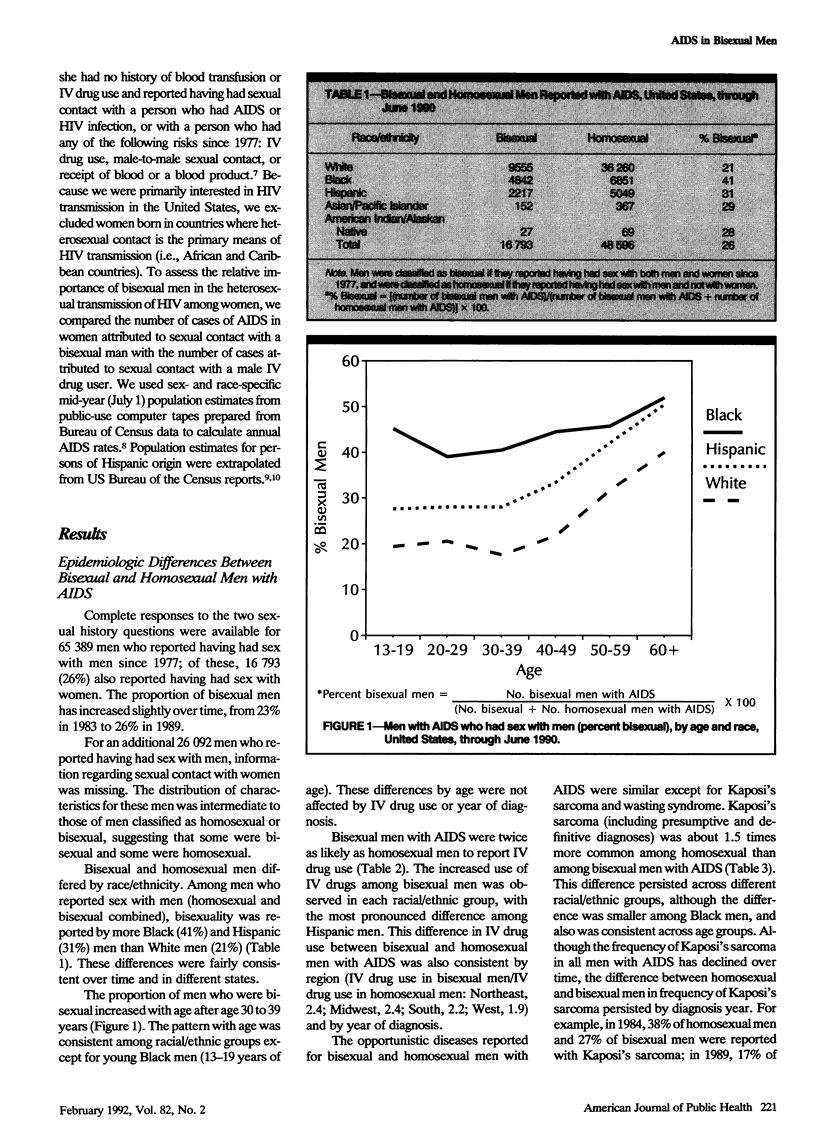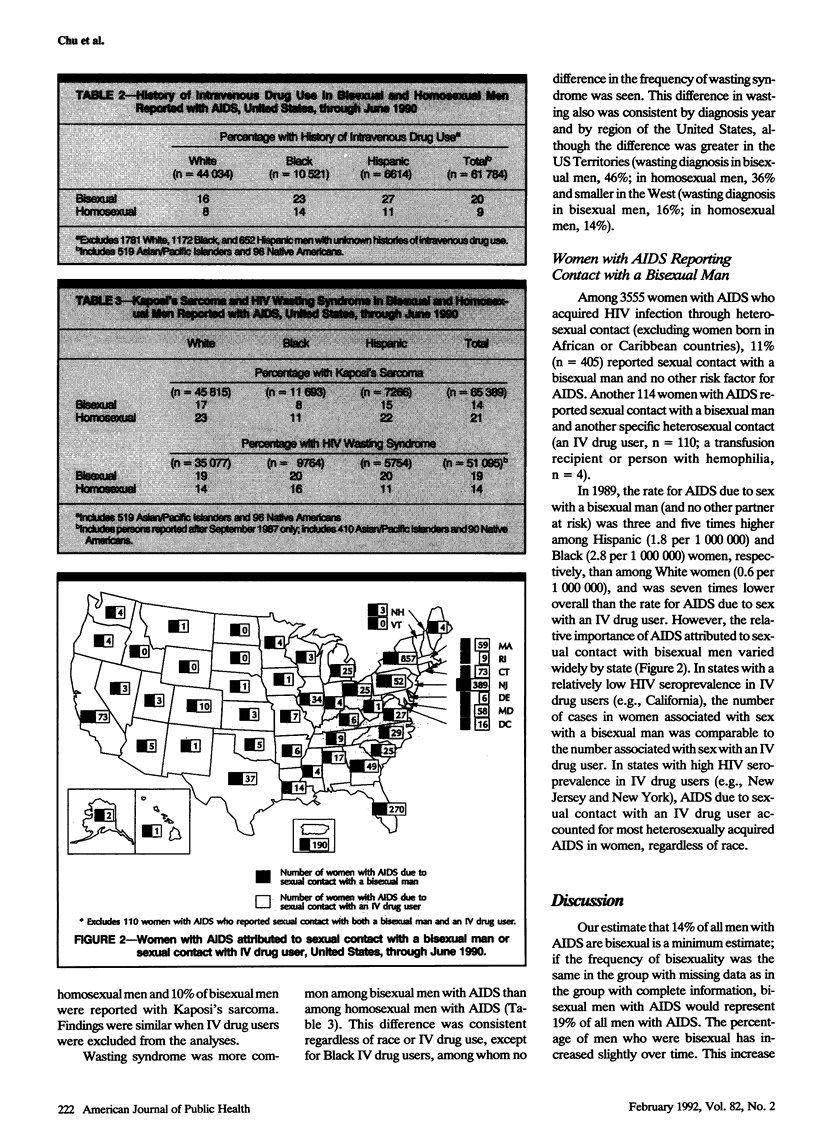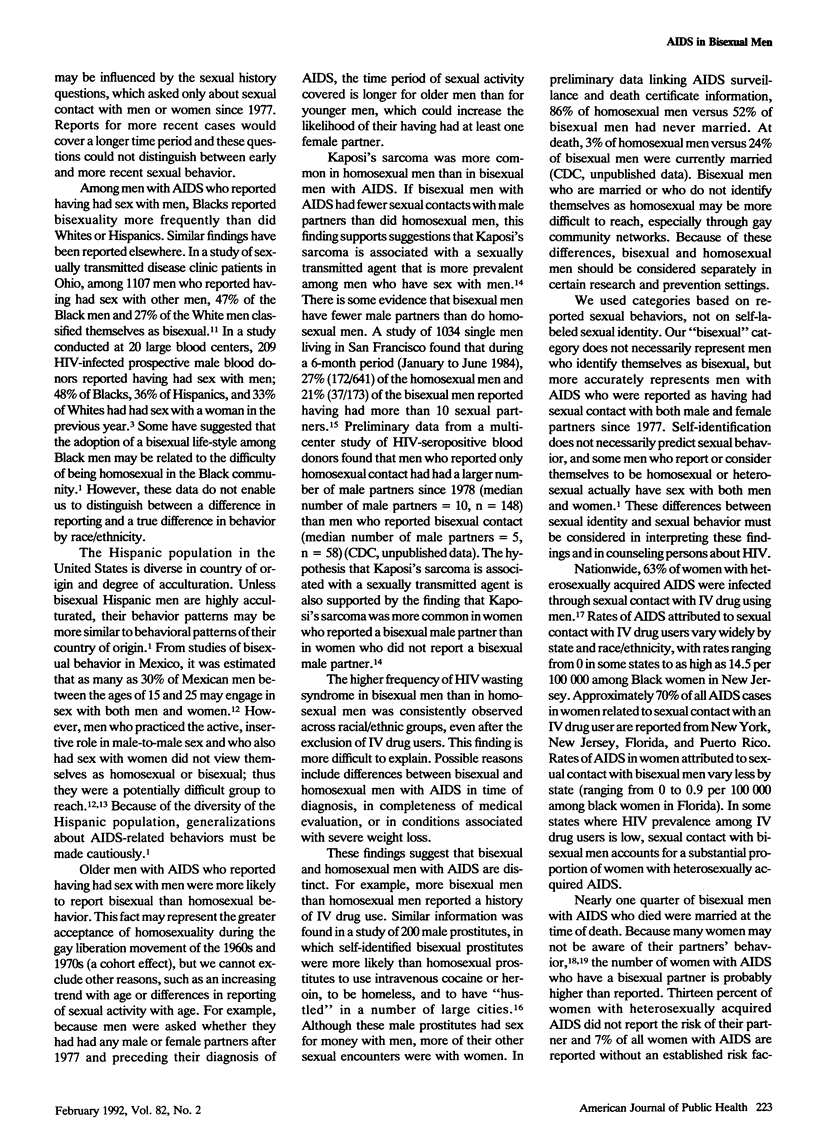Abstract
BACKGROUND. Homosexual and bisexual men with acquired immunodeficiency syndrome (AIDS) differ, and bisexual men play an important role in the sexual transmission of human immunodeficiency virus (HIV) to women. METHODS. To describe AIDS in these groups, we examined AIDS cases reported nationally through June 1990. RESULTS. Among 65 389 men who reported having had sex with men since 1977, 26% were bisexual. More Black (41%) and Hispanic men (31%) than White men (21%) reported bisexual behavior. Bisexual men were twice as likely to report intravenous drug use (20%) as were homosexual men (9%), regardless of race or ethnicity. Among 3555 women with heterosexually acquired AIDS, 11% reported sexual contact with a bisexual man and no other risk factor, although in some states approximately half reported such contact. In 1989, the AIDS rate due to sex with a bisexual man was three and five times higher among Hispanic and Black women, respectively, than among White women. CONCLUSIONS. Differences between bisexual and homosexual men with AIDS and the relative importance of AIDS in women due to sexual contact with bisexual men should be considered in the development of HIV prevention programs.
Full text
PDF




Selected References
These references are in PubMed. This may not be the complete list of references from this article.
- Beral V., Peterman T. A., Berkelman R. L., Jaffe H. W. Kaposi's sarcoma among persons with AIDS: a sexually transmitted infection? Lancet. 1990 Jan 20;335(8682):123–128. doi: 10.1016/0140-6736(90)90001-l. [DOI] [PubMed] [Google Scholar]
- Ellerbrock T. V., Bush T. J., Chamberland M. E., Oxtoby M. J. Epidemiology of women with AIDS in the United States, 1981 through 1990. A comparison with heterosexual men with AIDS. JAMA. 1991 Jun 12;265(22):2971–2975. [PubMed] [Google Scholar]
- Hays D., Samuels A. Heterosexual women's perceptions of their marriages to bisexual or homosexual men. J Homosex. 1989;18(1-2):81–100. doi: 10.1300/J082v18n01_04. [DOI] [PubMed] [Google Scholar]
- Kramer M. A., Aral S. O., Curran J. W. Self-reported behavior patterns of patients attending a sexually transmitted disease clinic. Am J Public Health. 1980 Sep;70(9):997–1000. doi: 10.2105/ajph.70.9.997. [DOI] [PMC free article] [PubMed] [Google Scholar]
- Selik R. M., Buehler J. W., Karon J. M., Chamberland M. E., Berkelman R. L. Impact of the 1987 revision of the case definition of acquired immune deficiency syndrome in the United States. J Acquir Immune Defic Syndr. 1990;3(1):73–82. [PubMed] [Google Scholar]
- Winkelstein W., Jr, Samuel M., Padian N. S., Wiley J. A. Selected sexual practices of San Francisco heterosexual men and risk of infection by the human immunodeficiency virus. JAMA. 1987 Mar 20;257(11):1470–1471. doi: 10.1001/jama.1987.03390110046011. [DOI] [PubMed] [Google Scholar]


